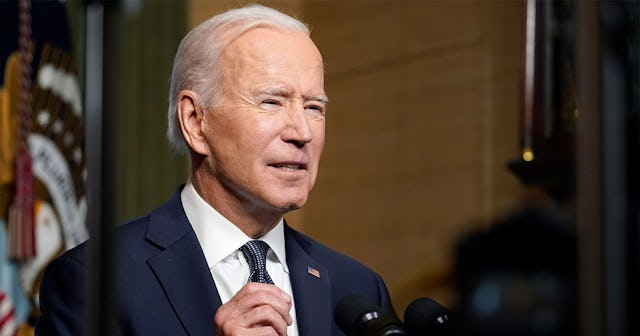Biden Announces Rescue Plan To Save The Child Care Industry

The administration believes the funds are an essential step to jumpstart an economic recovery and a more equitable future for women
COVID sucks, man. The pandemic has left virtually no profession untouched, yet the data shows that working women have been among the hardest hit. Parents can be without options if their preferred method of childcare is no longer available. No childcare? No work, for many.
The White House released details of a $39 billion of what it termed the American Rescue Plan. The funds went to states, territories, and tribes to tackle the child care crisis caused by COVID. These resources will support early childhood educators and family child care providers in an effort to keep their facilities open. Child care has been a keystone issue for essential workers and parents who are the primary caregiver for elderly relatives, in which case disproportionally affects mothers, who want (or need) to get back to work.
The numbers show that many dads have been able to return to work, but mothers, especially women without a college degree, have not done so at similar rates. This disparity means the gender income gap is forecast to rise by 5 percentage points. As women work to reclaim their place in the workforce, families with young children, and especially families of color where mamas may be sole or main breadwinners, may face extra financial burdens for years to come.
The White House stressed that women bring strength to the labor force – providing 91 percent of the income increases seen by middle-class families in the last 40 years. Yet since the beginning of the pandemic, about 2 million women have left the labor force, a disproportionate number, because of caregiving needs. The results, experts fear, will reverse decades of success in increasing the percentage of women in the workforce.
In short: without childcare, many women can’t go back to work.
Working against mamas is the fact that many early childhood and child care professionals – nearly all small businesses, predominantly owned by women and disproportionately operated by people of color – have been hit hard by the pandemic and are fighting an uphill battle to keep providing essential services. Child care professionals have met shrinking earnings due to lower enrollment while additionally bearing significantly higher expenses – up to 47 percent higher by one estimate – for personal protective equipment, cleaning supplies, additional staff, and other needs to remain open in a safe manner.
The statement from the White House acknowledges that child care providers already operate on extremely thin profits – even before the pandemic. The Biden administration quoted a December survey which found around one in four child care providers open in the early stages of the pandemic were closed, which reduced access to child care, particularly for families of color.
These closings made worse problems that persisted, even before the pandemic, when half of all Americans resided in what’s known as a child care desert. Child care professionals who have remained open have had to make tough choices, the White House says: two in five providers report shouldering debt for their programs by using personal credit cards to cover increased costs. The ripple effect has means that three in five programs have reduced expenses through layoffs, furloughs, or pay cuts. In even worse news, one in six child care jobs, generally held by women of color, still haven’t returned – at a rate that is much higher than the one in twenty jobs that have been lost throughout the economy.
The White House earmarked the $39 billion to provide $24 billion in child care stabilization funding for child care professionals to reopen or remain open, offer safe and healthy learning environments, keep workers on the payroll, and provide mental health supports for instructors and kids. The remaining $15 billion will be available for flexible funding to states in order to make child care more affordable for families, increase access to child-care for families receiving subsidies, improve pay for early childhood workers, and satisfy other care needs in their states.